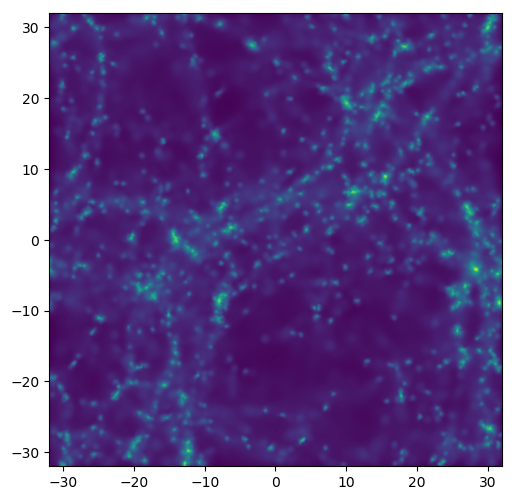Tutorials
The tutorials below should give you a rough idea of what is Py-SPHViewer capable to do:
- Using QuickView
- Using different projections
- Streamlines of N-body simulations with Py-SPHViewer
- Smooth Camera
- Blending images
- HSV Colour Space
- Py-SPHViewer and MPI
If you prefer to get started with Py-SPHViewer and come back to the tutorials later, please continue reading below:
Getting started
Getting started with Py-SPHViewer is easy. We show below a minimal example on how to obtain the projected density field of the distribution of dark matter particles in a cosmological simulation. After this example you should check the tutorials, which are useful to get started and understanding how Py-SPHViewer works.
The example below uses this hdf5 file, so please download it before running the code below:
import h5py
from sphviewer.tools import QuickView
with h5py.File('darkmatter_box.h5py','r') as f:
pdrk = f['PartType1/Coordinates'].value
QuickView(pdrk, r='infinity')
which produces the following image:

High-resolution cosmological simulations might result in more impressive results, such us the one shown in the next video: